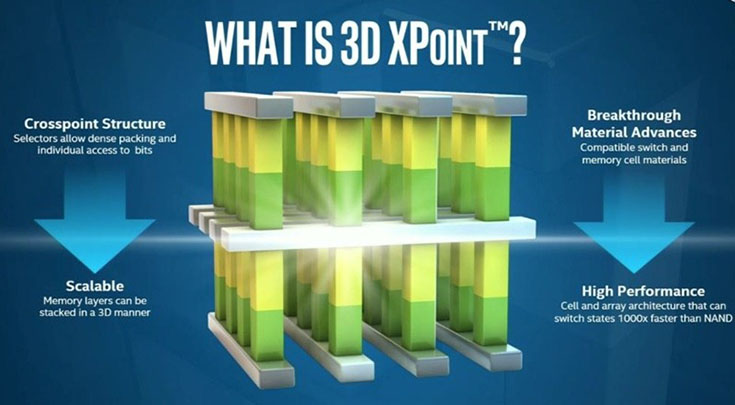A few months ago, Intel announced a new class of memory, called 3D Xpoint. According to the announcement, this type of memory will bring a major breakthrough in memory process technology.
Intel’s 3D Xpoint (pronounced as “crosspoint”) is 1,000 times faster and more durable than NAND Flash storage, as well as 10 times denser than the DRAM chips used in computers. We could expect first products that bring this technology in the upcoming months.
[quote]The innovative, transistor-less cross point architecture creates a three-dimensional checkerboard where memory cells sit at the intersection of word lines and bit lines, allowing the cells to be addressed individually. As a result, data can be written and read in small sizes, leading to faster and more efficient read/write processes.[/quote]

What is interesting is to take a look at Apple and see if the company is willing to adopt this technology. According to Macworld, 3D Xpoint is compatible with NVM Express (NVMe), which is an SSD protocol. Interestingly enough, Apple’s Retina MacBooks already bring this technology, and it’s expected that Skylake Macs will support it as well. This is how Apple could adopt Intel’s Optane SSDs, which are bringing performance speeds that significantly outrun the current SSDs.
The good news is that Apple was already willing to work with Intel towards early adoption of technologies. This could be seen by early implementation of Thunderbolt and chip technology from Intel. On the other hand, we wouldn’t be surprised if the Cupertino-based company decides to offer Optane SSDs as a pricey upgrade option.
Click here to download Intel’s infographic called “What is 3D Xpoint™ Technology” to learn more about this interesting breakthrough.



